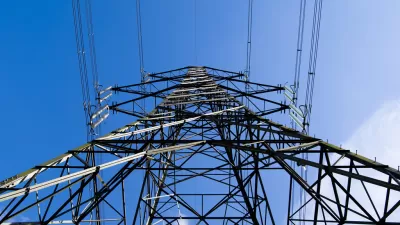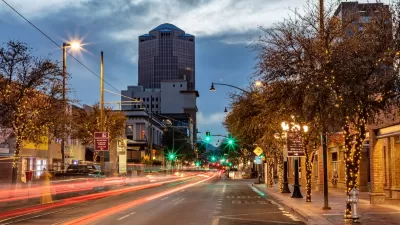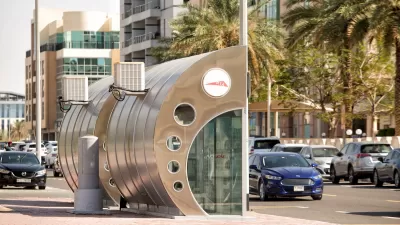A landscape architect in Tucson shares a professional lament: intrusive, ugly utilities.

Over the last decade or so, Ellen Barth Alster has noticed a trend in her county's electrical infrastructure: It’s getting uglier.
The landscape architect for the Department of Transportation in Pima County, Arizona, Alster makes clear on The Field that this is an indignity to the region’s cherished desert environment.
Where once utility infrastructure took care not to detract from the beauty of their natural surroundings, now, she writes, "aesthetics are given a passing nod, at best, in facility design." As a result, dark steel poles taller than any building have become "the most prominent landscape feature" on the open horizon.
She explains:
Local regulations written a decade ago have not kept pace with how massive the structures and facilities have become … Meanwhile, it’s a struggle to get communication providers to comply with the minimum of code requirements: siting for less visual impact, selecting environmentally compatible colors, replacing vegetation that will be impacted.
To gauge the extent of this trend anecdotally, Alster poses a few open questions to fellow professionals. Chief among them:
Are newer, larger power poles in your area being designed with visual compatibility issues in mind? Or are they becoming a dominant skyline feature?
The post is peppered with photos that clearly illustrate the contrast between tasteful utility poles to those that intrude on the protected desert landscape.
FULL STORY: When Did Scenic Quality Stop Mattering?

Planetizen Federal Action Tracker
A weekly monitor of how Trump’s orders and actions are impacting planners and planning in America.

San Francisco's School District Spent $105M To Build Affordable Housing for Teachers — And That's Just the Beginning
SFUSD joins a growing list of school districts using their land holdings to address housing affordability challenges faced by their own employees.

The Tiny, Adorable $7,000 Car Turning Japan Onto EVs
The single seat Mibot charges from a regular plug as quickly as an iPad, and is about half the price of an average EV.

Seattle's Plan for Adopting Driverless Cars
Equity, safety, accessibility and affordability are front of mind as the city prepares for robotaxis and other autonomous vehicles.

As Trump Phases Out FEMA, Is It Time to Flee the Floodplains?
With less federal funding available for disaster relief efforts, the need to relocate at-risk communities is more urgent than ever.

With Protected Lanes, 460% More People Commute by Bike
For those needing more ammo, more data proving what we already knew is here.
Urban Design for Planners 1: Software Tools
This six-course series explores essential urban design concepts using open source software and equips planners with the tools they need to participate fully in the urban design process.
Planning for Universal Design
Learn the tools for implementing Universal Design in planning regulations.
Smith Gee Studio
City of Charlotte
City of Camden Redevelopment Agency
City of Astoria
Transportation Research & Education Center (TREC) at Portland State University
US High Speed Rail Association
City of Camden Redevelopment Agency
Municipality of Princeton (NJ)





























